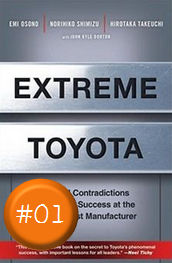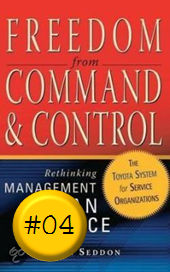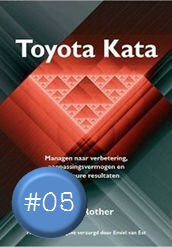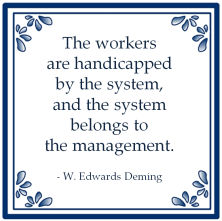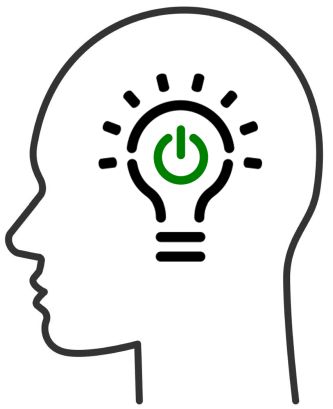
Microlearning
Microlearning is content that is purposely shortened to enable the learner to fit learning within their work and personal lives.
Carla Torgerson
Alias:
- Learning bytes,
- Learning burst,
- Burst of learning
- Chunked learning
- Mini elearnings,
- Learning snack,
- Essential
- Nugget,
- Chunk.
- Designing microlearning (boekentip)
- Learning nudges volgens Elliot Masie
- Microlearning volgens Any Galhotra
- Microlearning volgens Helma van den Berg
- Microlearning volgens Carla Torgerson & Sue Iannone
- Microlearning: short & sweet (boekentip)
- Microlearning to boost employee experience (boekentip) Microleren volgens Karl M. Kapp & Robyn A. Defelice
![]()
In het boek Microlearning: Short and Sweet definiëren Karl M. Kapp en Robyn A. Defelice microlearning als volgt:
Instructionele eenheid die vraagt om een korte betrokkenheid vraagt bij een activiteit die intentioneel ontworpen is om een specifieke uitkomst teweeg te brengen bij de deelnemer aan deze activiteit.
Kapp en Defelice onderscheiden zes verschillende vormen van microleren:
-
Pensive.
-
Performance-based.
-
Persuasive.
-
Post-instruction.
-
Practice-based.
-
Preparatory/preparation.
Bron: Microlearning: Short and Sweet, Karl M. Kapp & Robyn A. Defelice
![]()
Helma van den Berg geeft aan dat er vier voordelen zijn van een microlearning:
- Vaak mobiel beschikbaar.
- In 3-5 minuten te 'consumeren'
- Je kunt het tijdens je werk doen.
- Het gaat over een afgebakend onderwerp: maximaal 3 dingen om te onthouden.
Als je microlearnings omschrijft als leerinterventies die vragen direct, kort en krachtig beantwoorden, dan heb je de kern te pakken. Korte, gefocuste training, waarbij je de relevante kennis brengt in 3 minuten. Na het doornemen heb je het antwoord doordat de learning gefocust is op één leerdoel: de vraag van de lerende.
Microlearning wordt ingezet om belangrijke kennis te herhalen, te bestendigen en opzoekbaar te maken. Goede toepassingen hiervan zijn performance support, 70:20:10 of herhaling van belangrijke zaken uit een macro leermoment.
Waar het doel van microlearning is om zo snel mogelijk een antwoord te geven op een vraag die de lerende heeft, is bij macroleren het uitgangspunt ‘hoe leer ik meer van dit onderwerp’. Dat maakt dat lerenden bij macroleren tijd investeren door het volgen van bijvoorbeeld klassikale training of e-learning. Bij microlearning is de behoefte het krijgen van een instant antwoord op een vraag. Dus geen poespas er omheen. Als het antwoord niet snel gegeven wordt, is de microlearning niet toereikend (en de zoeker afgehaakt). microlearning vergt dus een sterke focus en kennis van hetgeen gezocht wordt door de vragensteller. Het is geschikt om in te zetten in combinatie met macrolearning. Je gebruikt het dan om de kennis te bestendigen uit het macromoment of om te oefenen met de geleerde gedragsverandering.
Van den Berg geeft ook een overzicht van de zeven meest gebruikte vormen van microlearning:
- Instructeur in video (korte, to the point uitleg door een instructeur).
- Infographic (snel overzicht van relevante cijfers en feiten rond de vragen die er zijn over een onderwerp).
- Geplastificeerde mindmap of memorycard (alle info overzichtelijk gepresenteerd) .
- Quiz (kennis toetsen + leren wat het goede antwoord is) .
- Animatie (2d- of 3d-content geanimeerd aanbieden) .
- Simulaties, rollenspellen of branching scenario's met interactieve mogelijkheden .
- Podcast
Bron: De kracht van microlearning, Helma van den Berg
![]()
Microlearning defined
What is microlearning? In many ways, microlearning is just a mash-up of many things learning professionals have already been creating and providing: just-in-time learning, performance support, post-training refreshers, and much else. The common thread for these pieces of learning is that they can be consumed quickly.
So, microlearning can be any learning content that stands alone or supports other learning activities, such as instructor-led classes, e-learning modules, and simulations. Microlearning can be used in four key ways: Preparation before a learning event.
- Follow-up to support a learning event.
- Stand-alone training.
- Performance support.
There are many kinds of infographics; most professional infographic designers say there are eight to 13 different kinds. The ones that are most relevant to microlearning are:
- List (list information about a subject)
- Data or visualized numbers (provides statistics about a topic; where the number itself or an image representing the number is the focal point)
- How-to-guide (provides step-by-step instructions)
- Flowcharts (starts from a single point and branches based on decisions)
- Timeline (tells how something changed over time)
- Comparison (compares and contrasts two subjects)
- Hierarchical (stacks information based on previous levels or steps)
Bron: Designing Microlearning - What Works in Talent Development, Carla Torgerson & Sue Iannone
![]()
De populariteit van microlearning in business is volgens Signum.ai te danken aan de volgende voordelen van Microlearning:
- Tijd: Het is makkelijk voor lerenden om een cursus te volgen omdat het niet veel tijd kost.
- Snel resultaat: Als je iets hebt na het afronden van een les waarover je meer weet, is dat een grote motivatie om door te gaan naar een volgende microlearning.
- Engagement: De lerende heeft snel resultaat en beloning (let dus goed op het positief belonen bij afronden). Dit verhoogt de betrokkenheid van de lerende.
- Flexibiliteit: Doordat de content snel te veranderen is, is het voor de organisatie ook flexibel en snel aan te passen.
- Lage kosten: Je kunt materialen hergebruiken.
Bron: https://lets-learn.nl/microlearning-in-business/2020/01/06/
![]()
Microlearning refers to any pedagogy that encourages learning in short segments, and it can be supported through many platforms, including social media.
(...)
Microlearning in general has three aims: to reduce the quantity of information by organizing it into bite-size pieces, to restructure the overall process of learning and the environment in which students learn, and to motivate students to personalize their learning routines.
(...)
Microlearning ...
- provides opportunities to deepen retention of information,
- creates learning communities, and
- increases student engagement.
When considering how we learn and retain information, it's important to consider cognitive load — Information flowing into our working memory.4 Based on the cognitive load theory, the working memory can become overloaded with information and halt or slow down the process of moving information into long-term memory.5 By chunking information and providing frequent microlearning opportunities, learning has the potential to decrease the cognitive load and increase long-term memory of the concept or topic.
Bron: https://er.educause.edu/articles/2017/4/learning-in-bursts-microlearning-with-social-media
![]()
Microlearning refers to an educational approach that offers bite-sized, small learning units with just the necessary amount of information to help learners achieve a goal.
1. More efficient transfer of learning
2. Learners prefer it
3. Creates more engagement
4. Matches the working memory capacity + attention spans of humans
5. Reduce development costs
Bron: https://www.shiftelearning.com/blog/numbers-dont-lie-why-bite-sized-learning-is-better-for-your-learners-and-you-too
![]()
What is Microlearning?
Microlearning, as the name suggests, features:
- Focused learning nuggets ideally designed to be 2-5 minutes long and normally not exceeding 7 minutes.
- It has a specific outcome or gain associated with it and should trigger the learner to the desired action.
It is supported across all devices—ranging from desktops/laptops to smartphones/tablets—and is the preferred mode for learning “on the go.” It has the following key characteristics.
- It uses rich media formats (notably videos and apps).
- It is action-oriented (wherein learners can use various types of Microlearning to learn, practice, or apply on the job).
The idea behind creating effective Microlearning nuggets is to keep them as crisp as possible while ensuring that they are long enough to adequately cover a learning objective.
(...)
Learnes love microlearning based training as:
1. It is short and focused.
2. It can be taken on the go.
3. It is available in the learners’ workflow and can be accessed at the moment of their need.
4. It is designed for multi-device support and provides control to learners on when and how they want to consume it.
5. It uses high-impact formats (notably, videos) that are engaging and immersive.
What are the benefits of Microlearning?
There are several benefits of Microlearning.
Benefits for learners
1. Learner-centric: Microlearning nuggets can be used in a flexible learning path and can be used to provide learners with a personalized learning experience. The flexibility they offer in terms of packaging them in the device of the learners’ choice helps them address varied learning styles.
2. Just-in-time: Microlearning nuggets can be offered to learners packaged as just-in-time Performance Support Tools (PSTs). They can be designed to meet a specific learning outcome and help learners apply the learning on the job.
3. Accessible: More than 1.2 billion learners have access to devices such as smartphones and tablets. Microlearning nuggets can be accessed on the device of learners’ choice (including smartphones and tablets) making them easily accessible for learners.
4. Rich media: Microlearning is an ideal fit for modern-day learners who appreciate information packaged in rich media formats.
5. Less time-consuming: With time, the average human attention span is decreasing. According to a study, the average human attention span was 12 seconds in the year 2000. Just a decade and a half has passed by since then, and the average attention span has dropped to 8 seconds. This makes Microlearning an ideal format for today’s learners.
Benefits for Business
1. Affordable and agile: Microlearning is relatively lighter on training budgets and gives organizations a cost advantage. Numbers suggest that Microlearning can bring down production costs by 50% and increase development speed by 300%.
2. Shorter development cycle: Shorter the learning nugget, shorter the development cycle. Microlearning nuggets can be developed quickly and, therefore, have a short development cycle, helping organizations not just spend less but also ship the product with a quicker turnaround time.
3. Easy to update: In case there are any updates to be made, Microlearning nuggets can be updated quickly, again proving beneficial for organizations in terms of the cost and turnaround time.
4. Wider application: Microlearning can be used for Formal as well as Informal Training needs. They can be used as Performance Support Tools (PSTs), as standalone learning nuggets, or as part of a series of courses. They can also be deployed through an LMS or weaved in the learning path of a learning portal.
5. High impact: Microlearning nuggets are designed to meet a specific learning outcome. This helps create a high impact as the learner gets exactly what he/she was looking for.
![]()
The term microlearning describes the use of eLearning in small, bite-sized, right-sized content to help learners accomplish a specific learningoutcome.Essentially microlearning is the the exact same practice as a normal length course but on different (smaller) scale. Reducing the course size into five-minute-long, quick-hit, training sessions – separating what you NEED to know, from what is NICE to know.
Bron: How to design a great microlearning experience, Suresh Kumar (ebook/pdf)
![]()
Microlearning is simply the process of delivering bite-sized content to learners that they can consume all at once and then apply immediately.
Bron: https://www.ej4.com/blog/what-does-science-say-about-microlearning
![]()
What Is Micro-Learning?
Micro-learning breaks information or skill-building content into small, easy-to-consume bits. It focuses on helping learners achieve one discrete objective—usually in five minutes or less—making it a little different than mini-courses, which typically last 10 to 15 minutes.
(...)
Moment-of-Need Learning
By splitting up learning into smaller, more targeted chunks, you make it easier for learners to find exactly what they are looking for in the moment of need.
Bron: https://community.articulate.com/articles/what-is-micro-learning
![]()
What Is Microlearning?
What is microlearning? Here are three definitions from knowledgeable L&D professionals. The definitions offer critical insights about how to use microlearning.
Learning from content accessed in short bursts, content which is relevant to the individual, and repeated over time to ensure retention and build conceptual understanding.
– Donald Taylor, author, chairman of the Learning and Performance Institute and the Learning Technologies Conference
Small but complete learning experiences.
– Clark Quinn, author and learning technology strategy leader
Relatively short engagements in learning-related activities—that may provide any combination of content presentation, review, practice, reflection, behavioral prompting, performance support, goal reminding, persuasive messaging, task assignments, social interaction, diagnosis, coaching, management interaction, or other learning-related methodologies.
– Will Thalheimer, author, learning-and-performance consultant and researcher
I picked these definitions because these people deeply understand training and learning technologies and I know they think deeply about L&D topics. Too many definitions of microlearning only agree that they are short. Using that definition would make me microlearning, as I’m short.
For microlearning to be valuable, Christian Glahn says we must:
- Provide adequate practice to improve understanding and ability to apply.
- Supply feedback to fix misunderstandings and improve ability to apply.
- Expect specific learning outcomes. It’s not enough to count number of views.
Is microlearning useful? Yes, and that’s why it’s not new.
Here are some uses for microlearning from Donald Clark and Will Thalheimer.
- Adaptive learning (Al) – Find and organize needed chunks to meet personalized learning needs.
- Course augmentation – Deliver short after-course or within-course interactions to reinforce and deepen learning.
- Remembering – Support remembering and ability to use with spacing and practice elements.
- Performance Support – Supply information when needed to perform a task, support tasks or behavior, and learn from others.
Bron: Microlearning, Macrolearning. What Does Research Tell Us?, Patti Shank
![]()
Microlearning
Met grote brokken informatie en lange lappen tekst loop je het risico medewerkers te overweldigen. Learning bites zijn daarentegen korte, overzichtelijke en aantrekkelijk gepresenteerde modules die een onderwerp beknopt uitleggen. Door te kiezen voor deze vorm van informatieoverdracht blijft het geleerde langer en beter hangen.
Bron: https://www.ag5.com/nl/wat-is-performance-support/
![]()
Performance development
Microlearning is designed to develop performance, not merely to aid learners in acquiring content or knowledge.
Think of the difference this way: Would you prefer an employee be able to recite the culture or the organization or demonstrate that culture through their work efforts?
Application of learning
Implementation of microlearning can become oversimplified as opposed to maximizing the professional advantages microlearning can provide. Microlearning products are meant to elicit application or use of content in performing work, as opposed to just being a training product with engaging, memorable content.
Consider your organization’s online training results: Would you rather have employees test well or perform exceptionally?
Bron: Advocating for Microlearning? Lead with Purpose & Potential, Robyn Defelice
![]()
The shift to workflow learning is rightly pushing organizations to break their lengthy courseware into stand-alone micro-learning bursts.
Clearly, there are learning moments in the workflow when learners actually need to step away from the work they are doing. But workflow learners don't have the time or disposition to search for and move through a lengthy elearning module or watch a 30-minute video.
What they need is instant access to just the learning they need (no more than they need) at their moment of need. Technology today provides us the ability to offer self-paced micro-learning bursts, proactively and reactively.
These personalized content management systems are impressive, but technology alone can't carry the day. The creation of micro-learning bursts isn't a straightforward effort. It requires altering the instructional design process to accommodate this need while at the same time providing the means of weaving these micro-learning bursts into more comprehensive learning solutions.
We also need a systematic methodology for breaking existing courseware into effective micro-learning components. It doesn't work to simply push a "Humpty Dumpty" course off the wall and break it into a bunch of micro-learning bursts. We need to do this in a way that learners can put all those micro-learning pieces "back together again" in their minds and skill sets.
Bron: The 5 moments of need - a performance-first approach, Conrad Gottfredson & Bob Mosher







